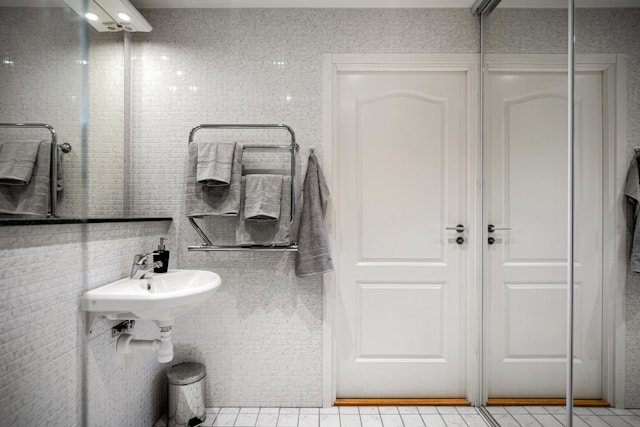Mold and mildew are common problems in bathrooms due to the constant presence of moisture and humidity. These fungi can be more than just unsightly they can cause unpleasant odors, damage surfaces, and even lead to respiratory issues. Whether you’re dealing with black mold in the shower or mildew on the ceiling, knowing how to tackle the issue effectively is key. This guide will walk you through how to remove mold and mildew from your bathroom and how to prevent them from returning.
What Are Mold and Mildew?
Mold and mildew are types of fungi that thrive in damp, warm, and poorly ventilated environments making bathrooms a perfect breeding ground. While mildew tends to be gray or white and lies on the surface, mold can be green, black, or even orange and tends to root deeper into materials. Both can cause health issues, especially in individuals with allergies, asthma, or weakened immune systems.
Signs of Mold and Mildew in Your Bathroom
Detecting mold early can save you time and money. Here are some tell-tale signs:
-
Visual Clues: Look for black spots on grout, discoloration on the ceiling, or fuzzy patches on walls.
-
Unpleasant Odors: A persistent musty or damp smell is often a sign of hidden mildew.
-
Hidden Areas: Mold can grow behind tiles, under sinks, in ventilation ducts, and even on shower curtains.
Regular inspection of your bathroom can help you catch mold growth before it spreads.
Tools and Supplies You’ll Need
Before diving into the cleaning process, gather the necessary supplies. You’ll need:
-
Rubber gloves
-
Safety goggles
-
Face mask
-
Scrub brush or old toothbrush
-
Sponge or microfiber cloth
-
Spray bottle
-
White vinegar
-
Baking soda
-
Hydrogen peroxide
-
Bleach (optional)
-
Mold-specific bathroom cleaner (if preferred)
Ensure proper ventilation by opening windows or turning on the exhaust fan while you work.
How to Clean Mold and Mildew
Natural Solutions
If you prefer to avoid harsh chemicals, natural mold cleaners can be just as effective for smaller patches.
Vinegar Method:
-
Pour undiluted white vinegar into a spray bottle.
-
Spray the affected area generously.
-
Let it sit for at least 1 hour.
-
Scrub with a brush and wipe clean with a damp cloth.
Baking Soda Paste:
-
Mix baking soda with water to create a thick paste.
-
Apply the paste to moldy grout or tile.
-
Scrub and rinse thoroughly.
Hydrogen Peroxide:
-
Spray 3% hydrogen peroxide directly onto the mold.
-
Leave it for 10-15 minutes.
-
Scrub and wipe clean.
Chemical Options
For more stubborn mold in shower tiles or along caulking, chemical cleaners may be necessary.
Bleach Solution:
-
Mix 1 cup of bleach with 1 gallon of water.
-
Apply to the moldy surface using a sponge or spray bottle.
-
Allow it to sit for 10-15 minutes.
-
Scrub and rinse thoroughly.
Note: Never mix bleach with ammonia or vinegar, as it creates toxic fumes.
When using any cleaner, always test a small area first to avoid damage and follow the manufacturer’s instructions.
Preventing Bathroom Mold and Mildew
Prevention is the most effective way to keep your bathroom clean and healthy. Here are some practical tips:
-
Improve Ventilation: Install or use an exhaust fan during and after showers to reduce humidity. Open windows when possible.
-
Fix Leaks Promptly: A small drip can create a big problem over time. Check under sinks, around the toilet base, and behind walls.
-
Dry Surfaces After Use: Wipe down shower walls, bathtubs, and sinks after each use to remove excess moisture.
-
Use Mold-Resistant Products: When remodeling or sealing, choose mold-resistant paint, grout, and caulk.
-
Clean Regularly: Routine bathroom cleaning helps prevent mold from taking hold. Focus on high-moisture zones like tiles and grout lines.
-
Control Humidity: Use a bathroom dehumidifier if your space tends to stay damp.
When to Call a Professional
While knowing how to clean mildew can help with surface-level issues, there are times when a professional is necessary:
-
Large or Spreading Mold Areas: If mold covers more than 10 square feet, it’s time to get help.
-
Recurring Mold: Mold that keeps coming back might be hiding behind walls or in ventilation systems.
-
Health Concerns: If mold is affecting your breathing or health, don’t risk DIY solutions.
A professional mold remediation expert can assess the problem and offer long-term solutions.
Final Thoughts
Mold and mildew in the bathroom are not just an eyesore they’re a sign that moisture control needs attention. By using effective cleaning methods and adopting preventative habits, you can keep your bathroom looking fresh and mold-free. Whether you prefer natural mold cleaners or chemical solutions, staying consistent with bathroom maintenance is key. With the right approach, you’ll prevent bathroom mold before it becomes a bigger issue.









